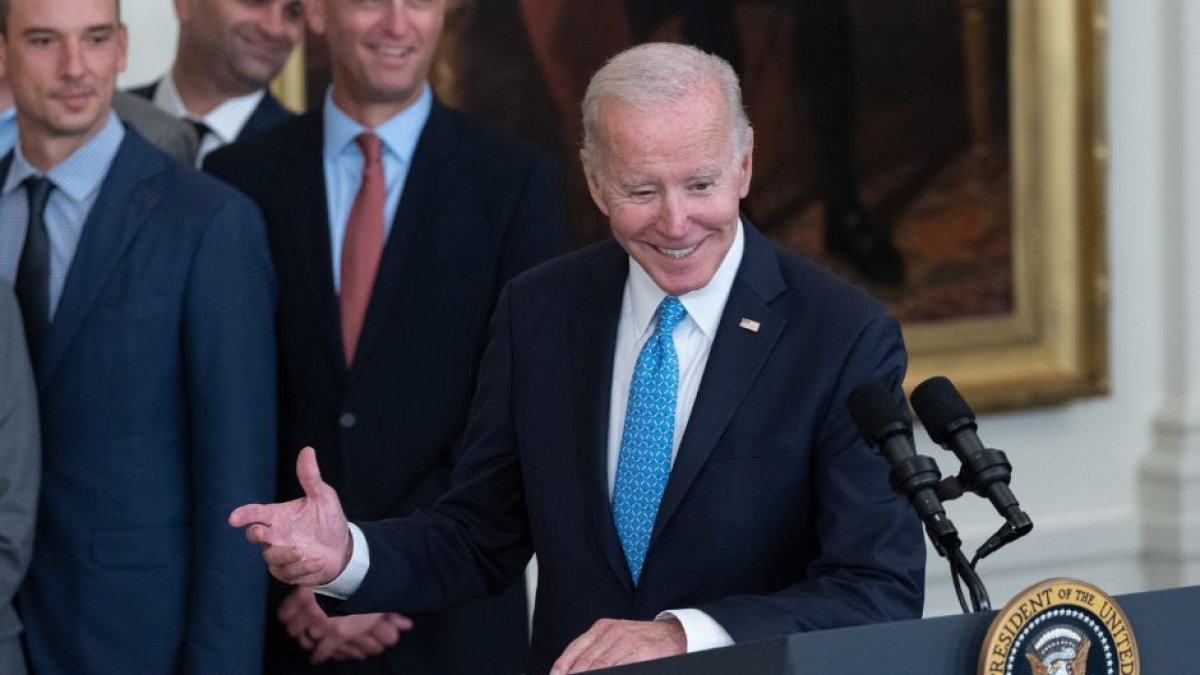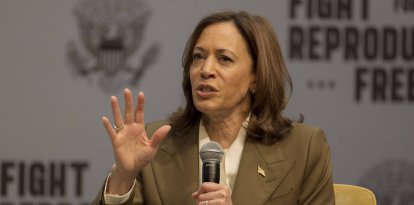Resumption of student debt payments could hurt Biden in the polls
After their plan to cut or eliminate the fees was thwarted by the Supreme Court, Americans should resume payments in the fall.

(Cordon Press)
Joe Biden lost the legal battle against the Supreme Court (SCOTUS) and student debt payments, paused since the Covid-19 pandemic, will resume in the fall. While the president has a new proposal, which would cost an estimated $156 billion, it is not certain to come to fruition and could have the same fate as its predecessor.
Coincidentally, this fall debt reset will occur when Joe Biden is trying to convince voters of America's strong economic performance.
According to an analysis by the Wall Street Journal, consumers would be affected by the return of monthly payments, specifically in their ability to save and purchase goods and services. "This will be a significant additional obligation that could lead to increased credit distress among the household sector and potentially change some spending patterns in certain segments of the population," Rohit Chopra, director of the Consumer Financial Protection Bureau, said in a statement.
Could this affect Joe Biden's re-election?
In the immortal words of James Carville, chief strategist for the successful 1992 Bill Clinton presidential campaign, "It's the economy, stupid." Therefore, when Americans with student debt start paying it off again and see their purchasing and saving power eroded, they may take it out on the current Democratic president.
That's the view of Alec Phillips, chief political economist at Goldman Sachs. "If you're the incumbent, ultimately, part of an election is just a referendum on the economy. It really doesn't matter who is responsible for what. If people are not happy, then they will take it out on the incumbent," he told POLITICO.
Before the pause, the Federal Reserve found that, on average, debt holders paid between $200 and $299 monthly. According to the Bank of America Institute, this addition would particularly upset households earning less than $251,000 annually.
Anna Zhou, an economist at the aforementioned institute, spoke to the aforementioned media outlet and clarified that most affected households have a sufficient cushion to meet the expense but may be forced to moderate their discretionary spending or reduce their savings accordingly.
The step-by-step of Biden's new education program
According to the Administration, borrowers can enroll "later in the summer," and those already enrolled in REPAYE will automatically move to SAVE. Those who sign up before the end of the summer will have their applications "processed in time" for the first payment due dates beginning in October.
According to the president, the plan is "legally sound" and is based on the Higher Education Act of 1965. "It's going to take longer, but, in my opinion, it's the best path left to provide debt relief to as many borrowers as possible," he said.
The concrete benefits of the initiative would be as follows: raising the income threshold for zero-dollar payments from 150% of the poverty line to 225%, thereby reducing costs for low-income borrowers. On the other hand, new interest limits would come into effect and borrowers would not have to pay interest that accrues in a month beyond what their monthly payment covers.
In an interview with Newsweek, Laurence H. Tribe, professor emeritus at Harvard Law School, stated that "by invoking the Higher Education Act of 1965 and directing the Secretary of Education to move forward with a new debt relief program using the Administrative Procedure Act to submit its details for public comment, Joe Biden is protecting his plans against successful legal challenges."
At the same time, this does not mean that it is lawsuit-proof. "These people are nothing more than litigators, and it's part of their DNA to resort to lawsuits against anything they don't find to their liking. As long as they avoid legally frivolous challenges, there's nothing wrong with that," he added.
How much does the new plan cost?
According to White House estimates, the SAVE initiative will cost about $156 billion over the next decade, below the Congressional Budget Office estimate.

























